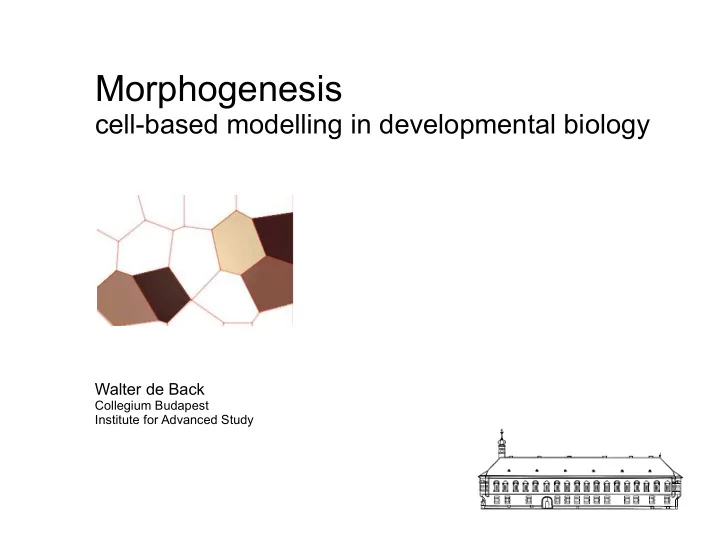

Morphogenesis cell-based modelling in developmental biology Walter de Back Collegium Budapest Institute for Advanced Study
Animal Coat Pattern's, Turing's Patterns Morphogenesis, Cellular Potts model Dictyostelium d ., Evolution of morphogenesis
Patterns
Turing Patterns Alan Turing, 1950
Turing Patterns Murray 1981 Varying parameters such as relative diffusion, domain size and shape, many patterns are possible
Patterns Turing: The stripes are easy, but what about the horse part?
From Genes to Organisms Via the Cell • Neo-Darwinism: – Genetic reductionism, esp. in the era of genomics – Organisms cannot be reduced to their genes • Need for a theory of morphogenesis – Development: genotype-phenotype mapping – How does it influence evolution? • Inter-cellular vs. Intra-cellular mechanisms – Cell-based modelling
Cell sorting through diff. adhesion Glazier, Graner, 1991 • Cell migrate and sort themselves based on different intercellular adhesion properties • Cell-oriented models – Cells are point-like entities – Cells are spherical – Cells are flexible deformable entities that try to optimize shape
Cellular Potts model aka Glazier-Graner-Hogeweg model • Two-scale cellular automata model • Biological cell consist of many lattice sites with same ’state’ – Properties: type, volume, growth constant, etc. • Between cells: – Free energy bond J ij where i and j are the types of the cells – Sites changes state as to minimize free energy
Dictyostelium ● Dd morphodynamics: ● Aggregation ● Stream formation ● Slug formation ● Slug phototaxis ● Fruiting body culmination ● Minimizing the role of gene regulation, instead: ● cell signalling ● cell adhesive movements
Evolution of morphologenesis Hogeweg, 2005 • Putting it back together – Within cell dynamics (gene regulation) – Between cell dynamics (adhesion, signalling) – Evolutionary dynamics (fitness differentiation)
Recommend
More recommend